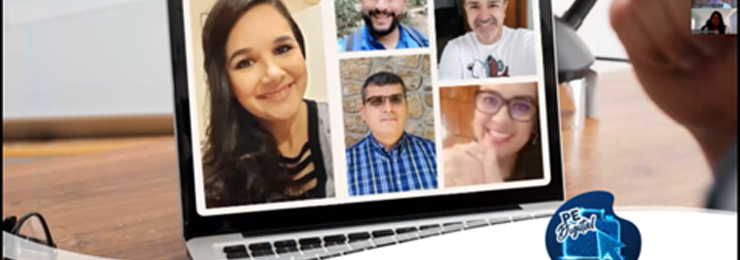It is easy to plan and go through a training programme, but how to ensure the implementation of new pedagogical approaches and methods throughout an organization? Achieving concrete and sustainable changes in teachers’ practice was what Häme (HAMK) and Novia Universities of Applied Sciences (UAS) experts had in mind, when they set out for a small-scale collaboration trial with the Costa Rican leading national vocational training provider Instituto Nacional de Aprendizaje (INA). This pilot was supported and encouraged by the Inter-American Development Bank, who saw an opportunity in partnering the institutions. The programme was launched with a series of five lectures, in order for the participants and the experts to get to know each other and share some thoughts on key concepts of Technical and Vocational Education and Training (TVET).
The topics were selected in line with priorities of INA and to meet the interests and needs of the participants as identified in an initial needs assessment. After that, the focus was immediately put on practical implementation through group development projects, with the aim of being used and disseminated widely within the INA. This development work was carried out by teams of INA teachers and teacher trainers selected for this pilot training, with support from HAMK and Novia UAS experts online. The groups received strong support from INA top management through the unit of Management of Training and Technological Services, as the leading INA unit in terms of technical, curricular and methodological management. They allocated time and supported the teams in the implementation, validation and dissemination of the projects.
The programme proved to be quite a success, in more than one way. It is one of the basic principles of this type of programme, that engaging in the collaborative trial process in the participants’ own work context is in fact more important than getting the specific project result right. One can be able to write perfectly rounded reports and process descriptions or brilliantly pass exams but if the way of performing and envisioning one’s own work has not changed, there will be little sustainable effect in the long term. One of the benefits of the process is that educational development starts taking place already during the training period. After the training period, the tools for further development are in the hands of the trained “change makers”, that stay within the institution, are able to build a vision for the future, and draft and execute new development plans.
Mastering the process of collaborative educational development is the actual fruit of the process and builds sustainable education development capacity within the organization, creating potential for profound change. This can be considered to have been well achieved in the INA pilot in the light of the feedback gathered from the participants, despite the short introductory period, and a relatively light and short guidance period from HAMK and Novia UAS experts with no face-to-face interaction.
On top of succeeding in adopting a new way of working together, and an overall enthusiasm for the active and engaging working method, the INA teacher and teacher educator groups also achieved remarkably useful results through their development projects. The didactic and pedagogical unit “Unidad Didáctica y Pedagógica (UDIPE)”, that is the responsible unit for the internal training of the teaching staff of INA, selected three out of the five developed projects for wider institutional dissemination and further development. They took charge of the operationalization of the three projects to reach all INA’s teachers (currently the INA has a total of 1,357 teachers nationwide). Although the topics (linked to the use of flipped classroom, ePortfolios and case studies) are not necessarily new to INA, the project teams managed to clarify and share the steps to follow in a concrete way, so that the tools and methodologies can be used throughout an organization as large as INA.
Since the project scope was rather limited in this pilot programme, the very foundations of training and education at INA were not addressed. In order to achieve institutional change, previous reform projects in Finland and internationally have shown that broader scope and long-term commitment are needed to design and implement profound changes on the organizational level.
Authors
Nana Niskanen, Education Development Project Manager, Häme University of Applied Sciences
Anna-Karin Jansson, Novia University of Applied Sciences




